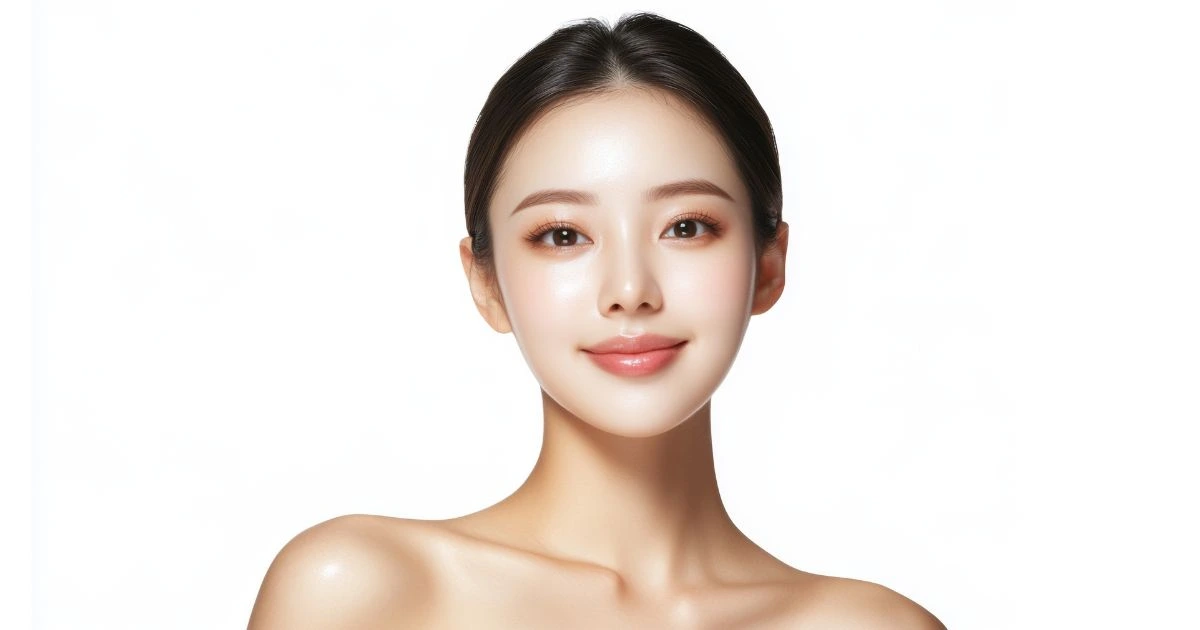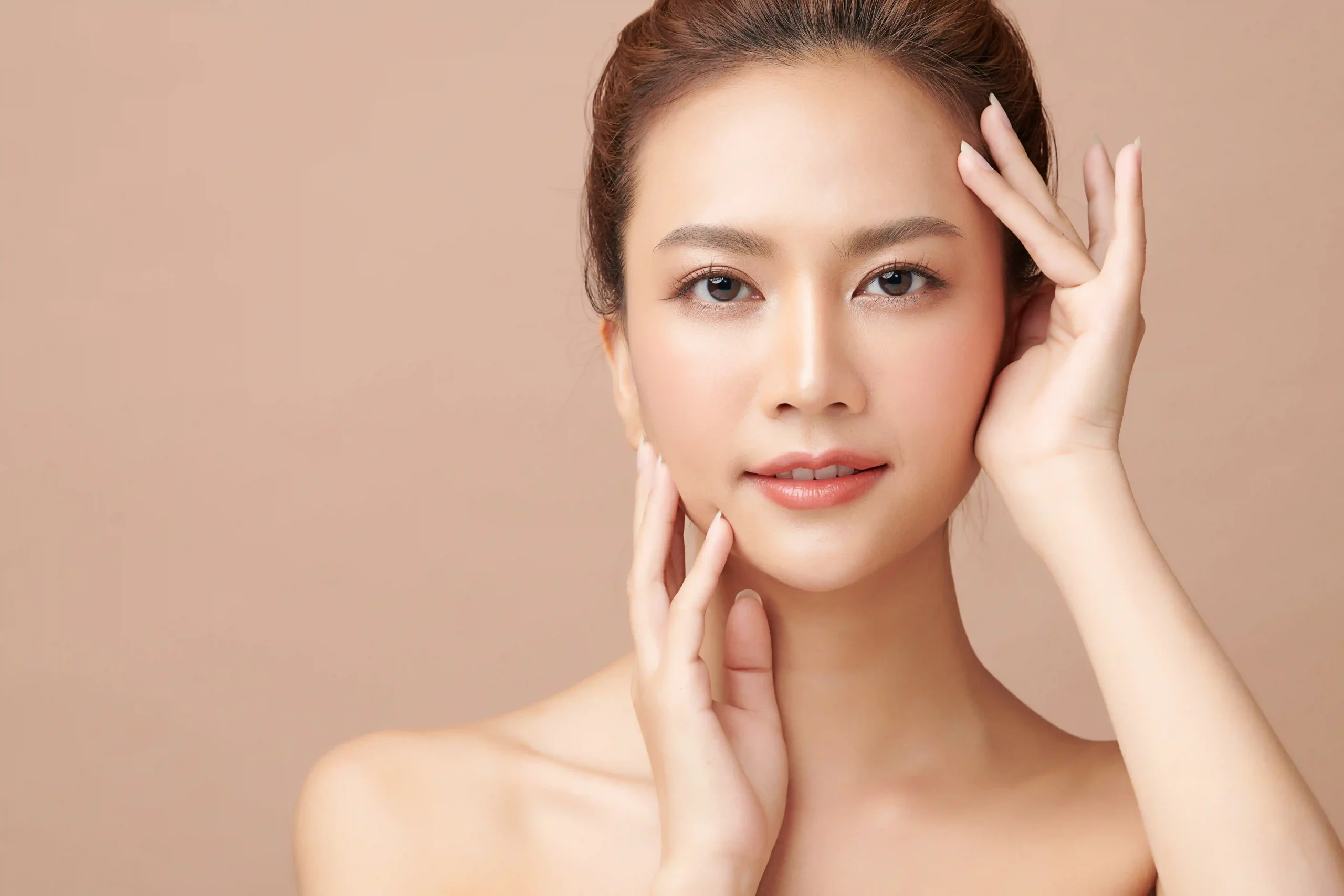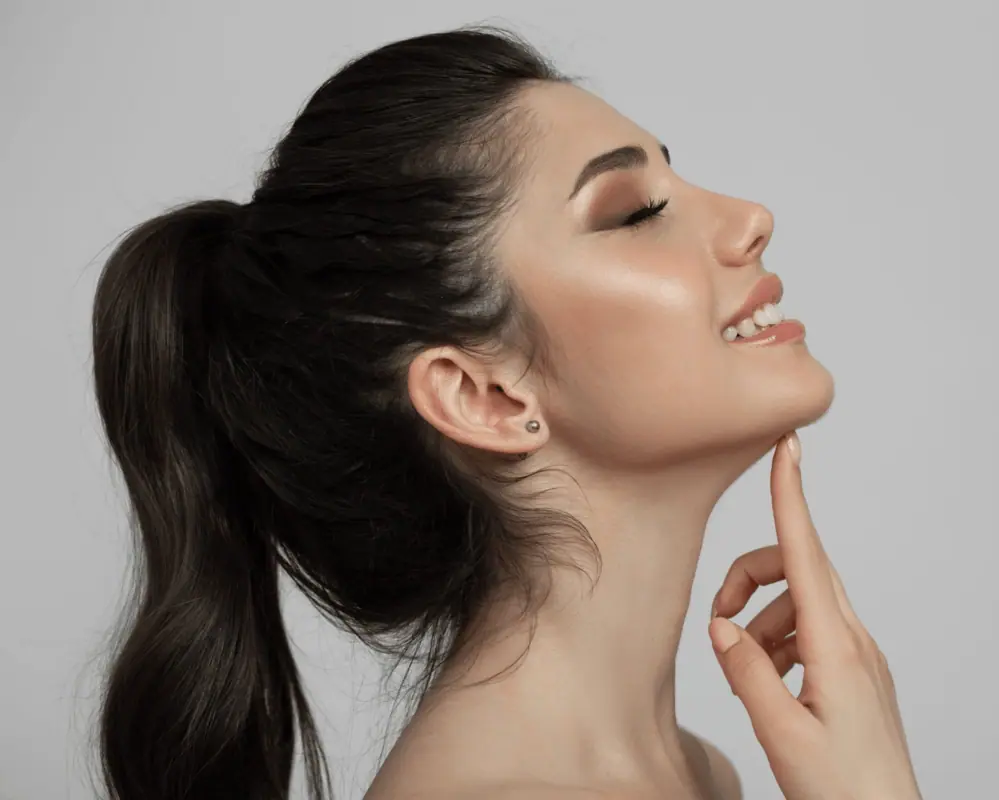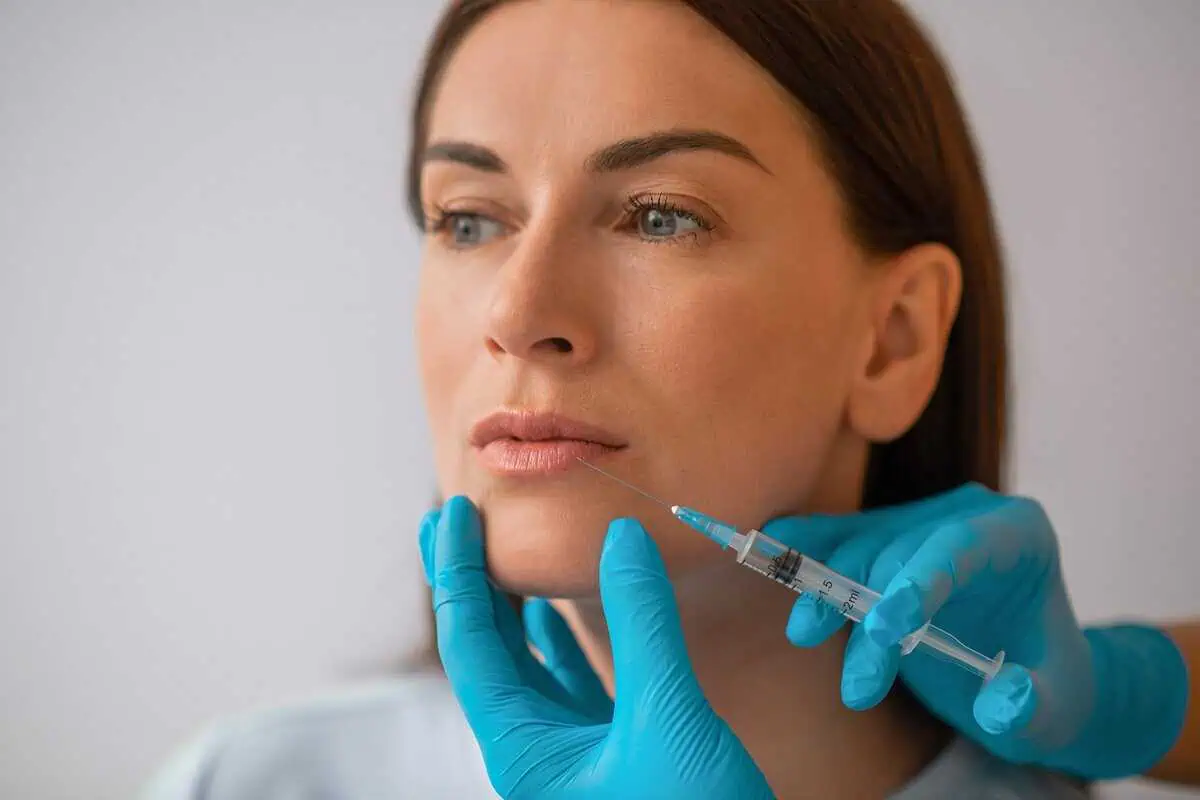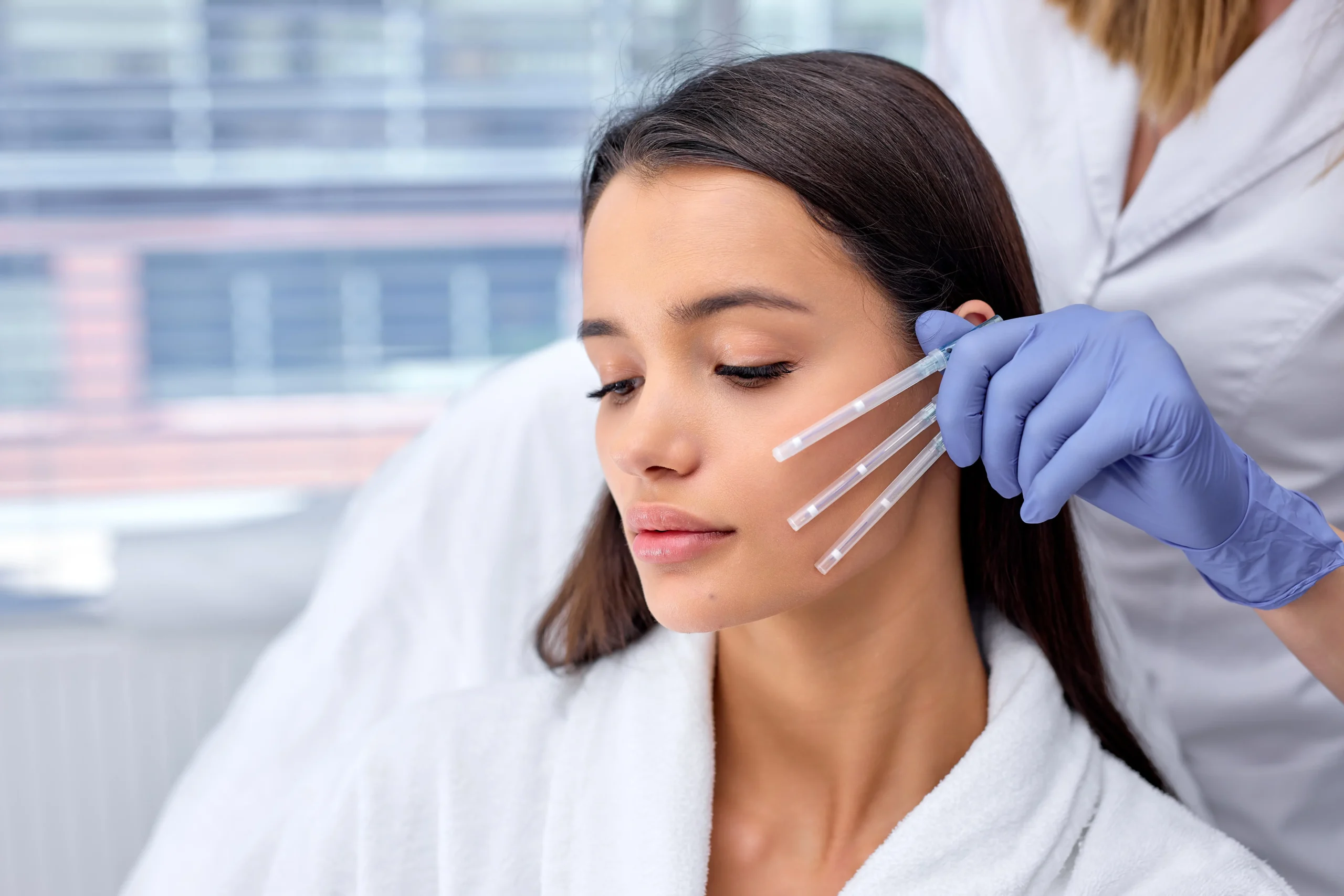Table of Contents
Fine lines, lax skin, and a drooping jawline usually trace back to one culprit: declining collagen production. Topical serums help hydration, yet they sit on the outer layers. Injectables add volume but cannot restore the skin’s internal scaffolding.
Ultherapy is renowned for stimulating new natural collagen by directing focused ultrasound deep below the surface. This article explains the biology behind collagen and shows why this FDA-cleared treatment lifts and firms areas that everyday products never reach.
Collagen 101: The Body’s Internal Support Mesh
Collagen is a triple-helix protein that acts like rebar in concrete, giving skin its structure and spring.
In childhood and the teen years, fibroblast cells pump it out at high speed. From the mid-twenties, production slows by roughly 1 percent each year.
External stressors—UV rays, smoking, pollution, sugar spikes—break the fibers faster than the body replaces them. The result is visible sagging around the eyes, cheeks, jawline lift targets, and neck.
Boosting fresh collagen is, therefore, essential for skin tightening that looks real, feels natural, and holds up over time.
Depth Matters: Why Surface Work Alone Can’t Firm Loose Skin
Skincare products work on the epidermis; light-based treatments stay in the dermis or just beneath.
Collagen’s most supportive network, however, lives in the superficial muscular aponeurotic system (SMAS). The latter is about 4.5 mm deep. That’s the same fiber layer surgeons manipulate during a facelift.
To remodel this level without surgery, energy must pass through the upper skin without harming it. Ultherapy accomplishes this by steering pinpoint ultrasound waves through intact tissue, where they meet at a precise focal point and create tiny thermal zones.
No incision, no downtime, yet the right depth is reached every time because the practitioner watches real-time imaging before firing each pulse.
How Ultherapy Sparks Neocollagenesis
Imaging
The handpiece first scans the target tissue. Real-time visual feedback guides the provider. This feature ensures that the ultrasound focuses exactly where new collagen will do the most good.
Thermal Coagulation Points (TCPs)
Each pulse heats a pin-sized spot to about 60–70 °C. This temperature is hot enough to trigger a healing cascade. However, it is cool enough to spare the surrounding tissues.
Immediate Contraction
Protein fibers tighten instantly, giving a subtle early lift some clients notice right after treatment.
Collagen Remodeling Phase (Weeks 2 – 12)
Inflammatory mediators recruit fibroblasts. New Type I and Type III collagen cross-link into stronger sheets, thickening the dermis and firming the SMAS.
Long-Term Maturation (Months 3 – 6)
Fresh collagen aligns along tension lines, continuing to improve skin elasticity and definition of the lower face, brow, and neck rejuvenation areas.
Because the body is doing the work, results appear gradually and look authentic. Ultherapy patients can expect a no-sudden “worked-on” look.
Key Benefits Rooted in Collagen Renewal
Brow Area – Subtle Lift and Eye Rejuvenation
New collagen supports a more elevated brow position. It also reduces upper eyelid hooding, creating a more open and refreshed appearance.
Cheeks – Mid-Face Firmness and Softened Lines
Strengthened collagen in the cheeks helps reduce sagging and softens the nasolabial folds (smile lines). Through this benefit, Ultherapy improves overall facial harmony.
Jawline – Sharper Definition and Contour
Increased collagen in the lower face helps tighten loose skin. It even sharpens the jawline for a more sculpted profile.
Neck – Smoother Texture and Tighter Skin
Ultherapy stimulates collagen along the neck, reducing skin laxity, horizontal neck lines, and the “turkey neck” effect.
Chest – Improved Tone in the Décolletage
Targeted collagen renewal in the chest area helps reduce crepey texture and smooth fine lines caused by sun exposure and aging.
What to Expect During Treatment
Consultation
A licensed provider reviews medical history, examines laxity levels, and maps treatment zones—brow, lower face, neck, or chest. High-definition photos track progress.
Session Flow
- Cleansing and topical numbing cream (if desired).
- Ultrasound gel application.
- Systematic delivery of pulses; each area takes 30–45 minutes.
- Post-treatment skin may appear flushed for an hour or two; makeup may be applied right away.
Sensation
Clients describe brief tingling or warmth with each pulse. Over-the-counter pain relief usually suffices; some skip anesthesia entirely. No open wounds mean no restrictions. Thus, patients can return to work, perform workouts, and attend social events immediately.
Aftercare
- Hydrate well and maintain a balanced diet rich in protein and vitamin C (collagen cofactors).
- Use broad-spectrum SPF 30+ to protect new tissue.
- Follow your provider’s customized home-care plan for amplified benefits.
Results Timeline and Maintenance
- Weeks 0–2: Subtle tightening from protein contraction.
- Weeks 2–12: Visible lift along treated contours as collagen rebuilds.
- Months 3–6: Peak improvement; skin feels denser and looks smoother.
- 12 Months +: Many maintain firmness for up to two years. Annual touch-ups help keep pace with natural aging.
Combining Ultherapy with volume-restoring fillers or resurfacing lasers can provide a comprehensive rejuvenation strategy. Discuss combination scheduling with your clinician to avoid overlapping recovery phases.
The Clair De Lune Difference
Choosing where to get Ultherapy® in Boston, MA, matters just as much as the treatment itself. At Clair De Lune Aesthetics & Wellness, the focus isn’t on rushing clients through a service—it’s on precision, personalization, and lasting outcomes.
Every Ultherapy session begins with a comprehensive evaluation. Our expert providers use ultrasound imaging to map the exact depth and location of your tissue before delivering a single pulse. This level of accuracy ensures that collagen stimulation happens where it’s needed most, whether it’s the brow, jawline, neck, or chest.
Frequently Asked Questions
Is Ultherapy safe?
Yes. Ultrasound imaging allows precise placement, and global safety data include more than two million treatments.
How many sessions are needed?
Most patients see full benefit from a single visit. Those with advanced laxity might schedule an additional session after six months.
Will I look over-tightened?
No. Collagen grows at a physiologic rate, so outcomes appear gradual and authentic.
Can darker skin tones receive Ultherapy?
Absolutely. Because ultrasound bypasses melanin, there is no pigment-related risk, making it ideal for all tones.
Does weight fluctuation affect results?
Significant weight loss after treatment can influence skin tension. Maintaining a stable weight helps preserve lift.
